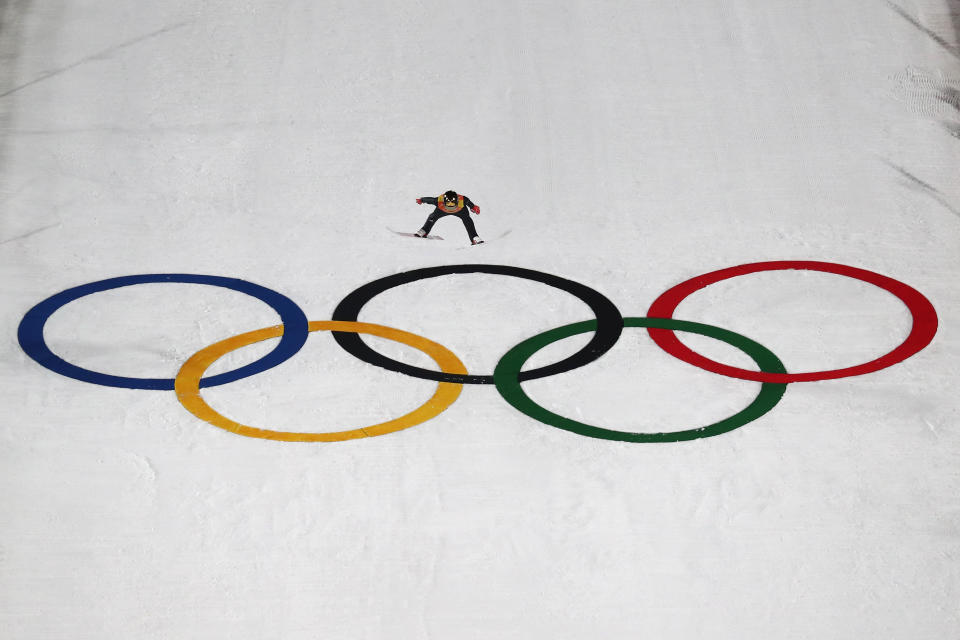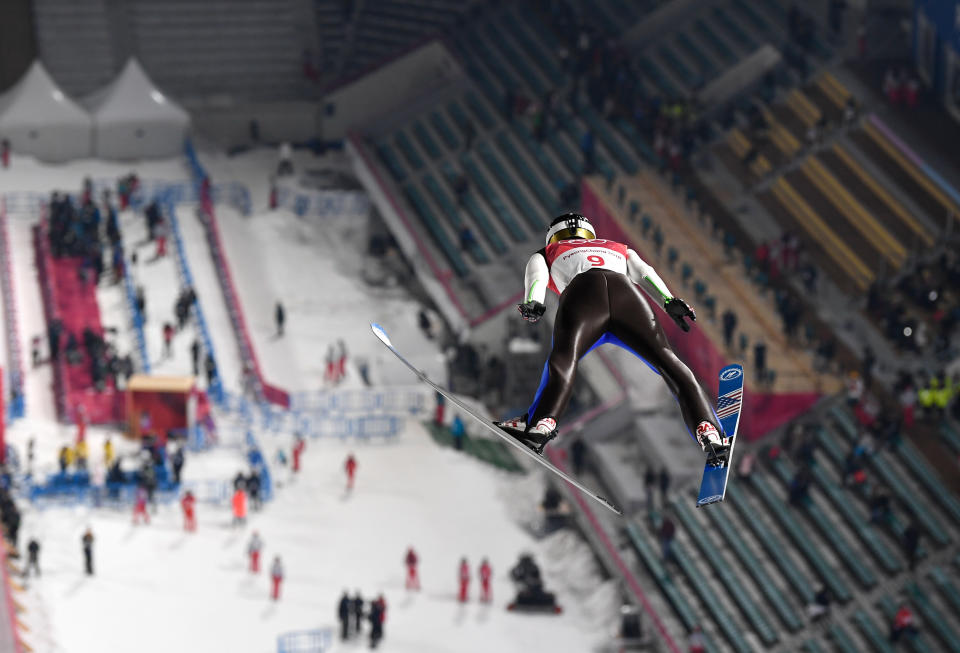How a small ski club in Chicago, of all places, produced three American Olympians
PYEONGCHANG, South Korea – You can see it from miles away. On top of a hill in Fox River Grove, Illinois, about an hour northwest of Chicago, stands an imposing structure, steep enough to trigger vertigo, large enough to make a daredevil quiver, constructed from old-fashioned American steel. “The same steel they used to build the Sears Tower,” Scott Smith said proudly. He is the president of Norge Ski Club, the unlikeliest cradle of American Olympians at the PyeongChang Games.
The story of how that edifice, a 70-meter (230-foot) ski jump, made its way to Fox River Grove is the story of how a delightful place for Norwegian immigrants to drink beer and live in cottages that looked like gingerbread houses morphed into a factory of ski-jumping success. It’s a story, too, of what happens when dedication meets talent, when persistence marries fearlessness, when kids willing to launch themselves hundreds of feet in the air find a willing partner in adults with dreams, too.
“My goal was to get one Olympian,” Smith said. “Just one from our club.”
And here he was all week, at Alpensia Ski Jumping Centre, watching not one but three jumpers from Norge measure themselves against the world’s best at the competition that quadrennially reminds the world the sport he loves is more than old Eddie the Eagle highlights. The final ski-jumping event of these Winter Olympics took place Monday night, and it was the team competition, the perfect contest to highlight just how Norge changed American ski jumping. It wasn’t just the ninth-place finish for Team USA, its highest ever in the Olympics. It was that 75 percent of the jumpers called Norge – pronounced NOR-ghee, like the clarified butter – their home club.
It was seeing Kevin Bickner, who was introduced to the sport as a 9-year-old when he attended Norge’s annual winter event that harkens back to its days as a festival of boozy delight, flying 430 feet, the 14th-longest jump in the first round. It was watching Casey Larson, who last week became the 100,000th male Winter Olympian ever, grow from the 6-year-old who went off a 20-meter in-run the first time he laid eyes on it to a 19-year-old happy to take on a 120-meter free fall. And it was Mike Glasder, who was the original Norge prodigy, make his first Olympic team at 28 and do what he loves in front of crowds who don’t need beer and Jagermeister to appreciate it.

Norge opened in 1905 as a haven for immigrants and introduced its first jump a year later – no surprise for the country that won gold in the team competition Monday. It’s the longest-operating club in the United States. “These ski clubs were everywhere,” said Guy Larson, the father of Casey and Cara Lawson, a 17-year-old expected to make the women’s team in 2022. “There were hundreds of them. Their houses were not as nice as their ski jumps. That was priority No. 1. Find a hill, build a jump.” Situated along the Fox River, Norge leased parcels of land to families, who built small chalets prized for their proximity to the hill.
The club understood guerrilla marketing before it was a thing, too. In the mid-1930s, it set up a ski jump inside Soldier Field. Another event was held at Navy Pier, where jumpers flew into the water. It bore no resemblance to the sport of today, in which participants don aerodynamic suits and tilt their bodies 70 degrees forward, almost parallel to the skis beneath them.
Not until 2000 was Norge much more than a good spot to hang. That’s when Smith, a former ski jumper who had been coaching for about a decade, pushed to open a training center for young jumpers. A pastime would turn into a passion, and Chicago – not Park City, Utah, or Steamboat Springs, Colorado, or Lake Placid, New York – would be its home.
The problem was Norge didn’t have the facilities to match its aspirations. So when Smith heard a shuttered ski club in Ely, Minnesota, was going to scrap its old jump, he and the city agreed that Norge could buy it for $1. The number of operating ski jumps in the United States had dwindled from 116 to 27, and the 70-meter Ely jump wouldn’t just spruce up the events that funnel most of the money into Norge’s $75,000-or-so annual budget. It would allow Smith to grow a generation of elite jumpers.
Ten people went to Ely and dismantled the jump. Cranes carried the pieces onto flatbed trucks, which hauled them to Fox River Grove. The volunteers who do everything at Norge – move the snow, clean the grounds, run the concession stands at events – rebuilt the jump. Now it’s the club’s showpiece, running year-round, with plastic matting allowing jumpers to train during the spring, summer and fall.

Casey Larson and Bickner, the 21-year-old who could grow into the best ski jumper America has produced, went off the 70-meter jump for the first time the same day. They grew up together as the program evolved into one featuring paid coaches at beginner, apprentice, intermediate and amateur levels.
“That was probably the most terrified I’ve ever been ski jumping,” said Bickner, whose 20th-place finish in the individual large-hill competition and 24th in normal hill were the best in PyeongChang by the American team. “Doesn’t happen very often. But I did it, and I was like, ‘That’s it?’ And since then, I don’t think the size of a jump has ever scared me.”
Now he, Glasder, Larson and Will Rhoads, the Olympic team’s fourth member, train in Slovenia, a ski jumping hotbed. All the years of them hopping into a 15-passenger van to drive 20 hours to Park City for competitions turned into Smith’s hopes for one Olympian coming in triplicate. He didn’t get to see the team event Monday, as he left here for the junior national championships in Anchorage, Alaska, where Norge will be well-represented. Between 30 and 40 kids are in Norge’s junior program at any given time, learning on the smaller jumps and graduating to the 70-meter, where they huck it up stairs to the top.
It’s not like the facilities in Europe, where the sport is religion and jumpers can ride lifts or elevators. Norge is pure Midwest, happy to make you earn that 50-mph ride down the slope and into the pristine skyline. For 100 years, it was a fun place to be, and for a dozen or so more, it has grown into the sort that breeds Olympians – one with a counterintuitive truth for a place happy to send kids careening down a hill.
“It started in 1905,” Casey Larson said, “and it’s gone uphill from there.”
More Olympic coverage from Yahoo Sports:
• Russian curler formally charged with doping in PyeongChang
• Ice dancer on wardrobe malfunction: ‘It was my worst nightmare’
• Adam Rippon won’t actually be an NBC Olympic correspondent
• Vonn playing ‘mind games’ after third-place training run
• Gold medalist comforts silver medalist in true Olympic moment

 Yahoo Sports
Yahoo Sports 

